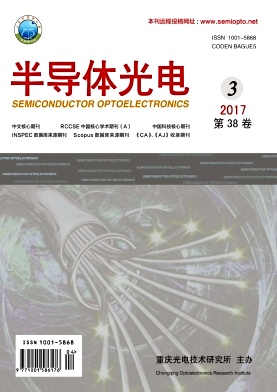半导体光电, 2017, 38 (3): 349, 网络出版: 2017-07-10
全息聚合材料PQ/PMMA的光学反应分析
Optical Response Analysis of Holographic Polymeric Materials(PQ/PMMA)
曝光强度 空间频率 失真效应 折射指数 PQ/PMMA PQ/PMMA exposure intensity spatial frequency distortion effect refractive index
摘要
为了探究掺杂有菲醌的聚甲基丙烯酸甲酯(PQ/PMMA)光致聚合材料的光学特性, 根据该全息聚合材料基本理论以及内部的光化学反应机制与效应, 通过数学方法构建内部反应模型进行仿真与拟合, 分析了曝光强度、空间频率对产物、折射指数的影响以及存在的失真效应。结果表明: 在给定参数下, 曝光强度的最佳选择范围为60~80 mW/cm2, 空间频率的相对优化的选择为1 800 lines/mm。
Abstract
To investigate the optical properties of phenanthrenequinone-doped PQ/PMMA photopolymer materials, according to the basic theory of the holographic polymeric materials and its internal photochemical reaction mechanism and effect, the internal reaction model for simulation and fitting is established by using the mathematical methods. The effects of the exposure intensity, spatial frequency on the product, refractive index and the distortion effect are analyzed. The results show that under the given parameter settings, the best choice for the exposure intensity is 60~80 mW/cm2, and the best choice for spatial frequency is 1 800 lines/mm.
林星宇, 邢端松, 刘水. 全息聚合材料PQ/PMMA的光学反应分析[J]. 半导体光电, 2017, 38(3): 349. LIN Xingyu, XING Duansong, LIU Shui. Optical Response Analysis of Holographic Polymeric Materials(PQ/PMMA)[J]. Semiconductor Optoelectronics, 2017, 38(3): 349.



